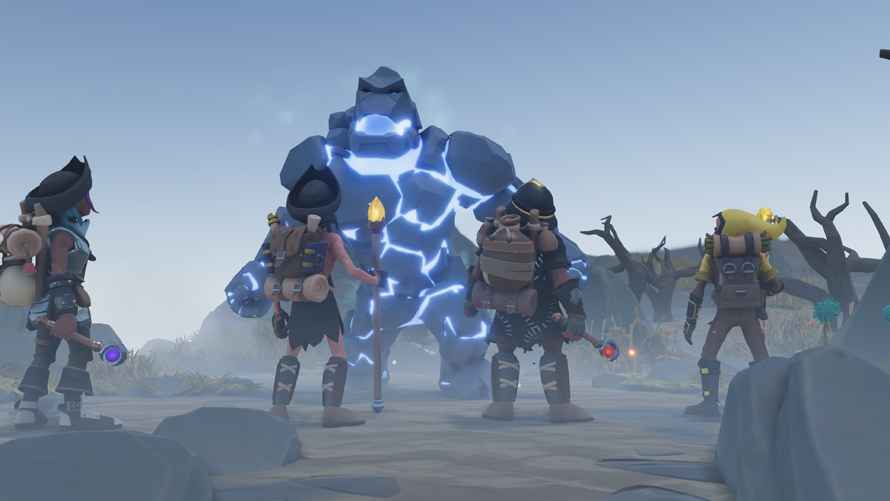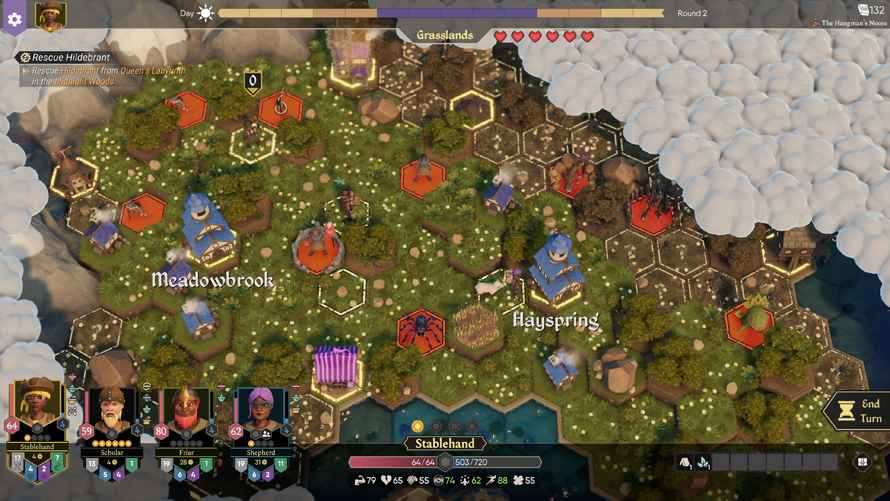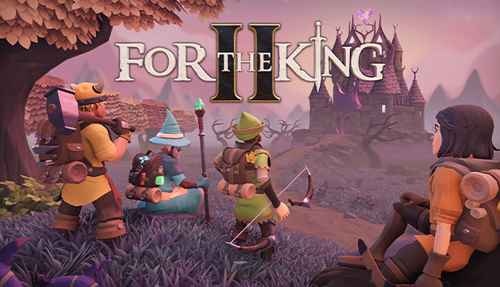For the King II Review
Did you ever think to yourself, I’m really in the mood for sushi? Ok, maybe sushi isn’t your thing, but you get the idea. We get cravings for different foods. Games are like that, too. You’ll sit down at your PC, controller in hand and think, I’m hankering for a bit of strategy. Or maybe a turn based RPG…or a roguelike. Well, if any of those are on the menu, For the King II has got you covered.
The Queen Must Die
For the King II is, obviously, a sequel to the popular turn-based RPG For the King. It takes place 20 years after the first game. Queen Rosomon is mad with power or some vile corruption and is jailing or killing any of the populous who oppose her. You gather a party of four and follow a narrative across five regions of a sprawling overworld map, taking on main and side quests. There are monsters and dungeons to explore, loot to find and NPCs to befriend as you foment resistance to the Queen.
In terms of general mechanics, For the King II sticks pretty closely to traditional turn based RPGs. The overworld map presents the story and you take turns moving each member of your group separately. There’s something to do or discover on nearly every tile, whether it’s a one-off battle, a treasure or a quest. Your main objectives are clear enough, but getting there involves a lot of challenging but entertaining detours, including some very engaging random events that pay big rewards.

You begin the game by crafting a party of four, each member of which can come from five starting classes like blacksmith, scholar (mage) or hunter. These can be very slightly customized and there are some small choices as to gear. The game doesn’t demand your party be balanced. You can build a quartet of mages, if that’s what you want. However, you’ll benefit more from a wide selection of weapons and abilities in combat.
Into the Fray
Combat itself is typical of the turn-based genre, with your forces moving around two rows of tiles. Positioning matters. For example, placing an archer behind a shield user blocks them from damage. In the overworld, enemy encounters are usually small scale fights against the usual fantasy-based characters like wolves, blobs of animated jelly and the like. Even these battles can be challenging.
Unlike overworld encounters, your party can’t flee from a dungeon. Dungeons consists of several connected rooms. Some contain combat, others treasure. Even at the easiest setting, party wipes are pretty common — well, they were for me, anyway.

Party members can be revived by surviving characters during battle, and at locations on the overworld map. Because For the King II is a roguelite, though, if all characters die that area’s campaign starts over, with a new party. There is, however, a currency that allows the player to purchase some persistent upgrades, items and abilities assignable to the new characters.
It all sounds pretty straightforward but there are a lot of minor, but important, mechanics at play, not all well explained. Luckily, there’s a pretty good in-game encyclopedia. Players of the original game can jump right in. Not a lot has changed. For newbies, expect a somewhat vertiginous learning curve.
Full of Character(s)
For the King II goes for a stylized, charming and colorful storybook look, and really, the art direction is overall excellent. The overworld map can be a bit cluttered and hard to read. Down at battle level, though, the visuals are clean and detailed. Animations, spells and combat effects are varied and engaging.

There is no voice acting at all. Combined with the somewhat anemic sound design in combat the result is an element that feels absent. The game’s music, which is good, has to carry almost the entire weight of the game’s audio. Luckily, it’s up to the task.
For the King II is a happy synthesis of accessibility and depth, though some of the mechanics can be a bit opaque. It’s ideally a game for four friends but works well enough for a solo player. There’s a bit of a learning curve and it might take time to click, but overall For the King II is colorful, appealing and a lot of turn-based fun.
***PC provided by the publisher for review***
The Good
- Colorful, appealing art
- Engaging combat mechanics
- Lots of replay value
The Bad
- Sound design is lacking
- Can be complex and opaque

